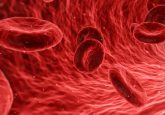Tenth anniversary of bevacizumab in colorectal cancer: has it fulfilled its promise?

The addition of bevacizumab to the treatment of metastatic colorectal cancer patients reaches its tenth anniversary this year accompanied by somewhat mixed feelings from our perspective and the lack of unanimity among oncologists dealing with this deadly disease. While it has definitely become a new option in many treatment combinations in the advanced disease setting, its strategic positioning is complex and controversial. While some advocate for its wider use in first- and second-line chemotherapy combinations, even continuing it beyond progression, others are more cautious and recommend a more restricted use. Its efficacy has been validated in multiple Phase III clinical trials with a number of chemotherapy backbone regimens, which provide solid evidence confirming its consistent biological activity and clinical relevance [1–6]. However, not all chemotherapy regimens are the same and bevacizumab has yielded its best, indisputable results in second-line therapy or in combination with chemotherapy backbones that could be viewed as suboptimal, alternative or even inappropriate. Furthermore, it has failed to be of any additional benefit to current standard oxaliplatin-containing adjuvant chemotherapy [7,8] and there are also diverse views on its safety profile. While some physicians claim that it combines well with all chemotherapy regimens without cross toxicities, others emphasize its silent, yet life-threatening class effect cardiovascular adverse events [9].
A clear explanation of the gap between the promising preclinical findings and the limited efficacy of bevacizumab and other angiogenesis inhibitors in the clinic is lacking. Nevertheless, some hints derived from preclinical models regarding the induction of a more invasive phenotype can explain the absence of benefit in the adjuvant setting or, conversely, the higher clinical efficacy in the later advanced settings [10].



